
Part 1: Hitler’s Favorite Commando and Unlikely Mossad Agent
[Otto Skorzeny was] a key agent in the most important operation waged by Israeli intelligence at the time.
—Rafi Meidan, head of the Amal(ek) unit of Mossad.
At some point in 1962 [J. J. Angleton, head of the CIA Israel desk,] was made aware of an Israeli intelligence plan to use [former Waffen-SS Colonel Otto] Skorzeny in a clandestine operation designed to shut down Egypt’s rocket program, which was threatening their nation.
–Major Ralph Ganis in The Skorzeny Papers: Evidence for the Plot to Kill JFK.
Otto Skorzeny was an infamous Viennese Waffen-SS colonel during World War II, recognizable by his dueling scar and famous for a variety of daring commando operations. In November 1938, as an Austrian officer, he participated in burning synagogues during Kristallnacht.
In April 1943 he headed an exclusive training school, known as Hunting Group 502, for German officers specializing in sabotage, espionage and other paramilitary operations. Training included use of all types of firearms, modes of travel, parachuting, swimming as well as proficiency in English, Russian, Italian and Persian.
Skorzeny designed noteworthy daring operations for Hitler, many of which were successful. His most famous adventure involved rescuing an imprisoned Benito Mussolini from a mountain top by landing troopers from gliders. In 1944 he planned the kidnapping of Hungarian regent Miklos Horthy and his son to get him to abdicate, which eventually led to the extermination of tens of thousands of Hungarian Jews. Simon Wiesenthal designated Skorzeny a war criminal.
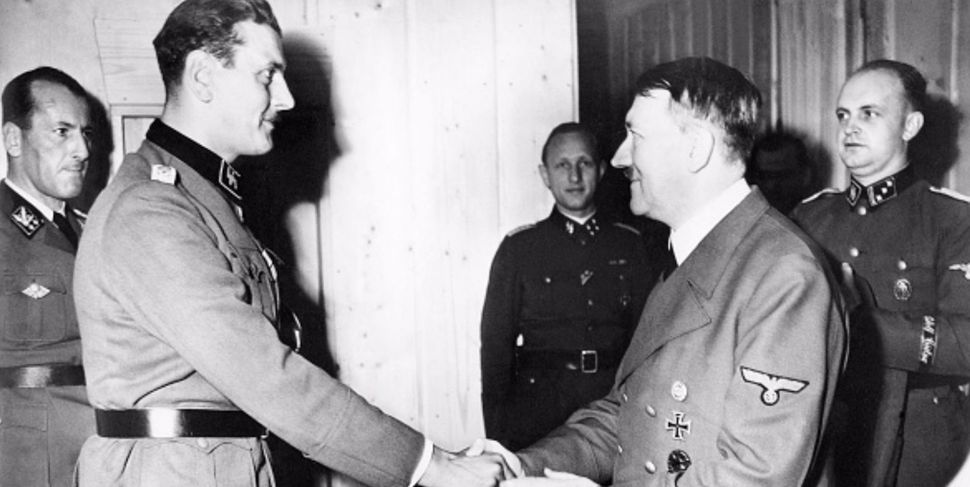
Toward the end of the war, Skorzeny oversaw a variety of operations, including plans to assassinate Allied leaders, parashooting fake Allied soldiers into France, and creating havoc for the Americans in the Battle of the Bulge. His Werewolf group prepared depots behind enemy lines as part of what we now think of as Operation Gladio.
At war’s end he was captured by the United States Army but, because of his unique skills (like those of German spy chief Reinhard Gehlen), the future CIA assisted him to “escape” from detention. During his flight he stayed with (and later married) Ilse von Finckenstein, a protégé of Hitler’s finance minister Hjalmar Schacht, whose knowledge of where stolen money was hidden helped fund “ratlines” in Rome, which facilitated the escape of thousands of SS officers and other Nazis.
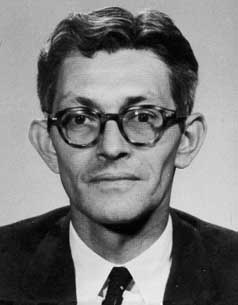
In this activity, Skorzeny worked alongside the CIA’s James Jesus Angleton, with whom he remained in close contact.
Future Israeli intelligence officer Shalhevet Freier was also working with Angleton in Rome. He briefly hired notorious Nazi mobile gas van inventor Walther Rauff as an informant. This period in Rome was also the beginning of Angleton’s close relationship with the future Zionist state. He essentially created the Mossad and maintained ties that were so close as to make him virtually an Israeli agent.
Skorzeny traveled between Europe, South America and Egypt to settle various Nazi officers. He eventually landed in Francisco Franco’s Madrid, where he established himself as an engineer and real estate developer while engaging in profitable arms deals. He also set up a commando training school like those he had managed in Germany in the nearby mountains.
In 1959 he expanded his training camp to a 160-acre “farm” in Ireland. In the 1950s and 1960s his graduates participated in kidnappings and assassinations for pay (often using clandestine CIA resources) in various hotspots, including Southeast Asia, Africa, and for the OAS (French fighting against independent Algeria).
Skorzeny is said to have been behind the kidnapping (leading to murder) of Prime Minister Patrice Lumumba of the Congo in early 1961 and a nearly successful assassination attempt on French President Charles de Gaulle at Petit-Clamart in August 1962.
Evidence that Skorzeny Masterminded the JFK Assassination
U.S. Major Ralph Ganis, like many in the military, was intrigued by the exploits of the famous Nazi commando. When thousands of Skorzeny’s business papers came up for auction, Ganis purchased them.
The retired major was shocked to discover that the papers, along with other documents, indicate that Skorzeny’s activities corresponded to planning for the assassination of President John F. Kennedy in Dallas on November 22, 1963.
Skorzeny’s paramilitary snipers did the shooting in a triangular pattern like the one used for the attempt on de Gaulle. Unlike the de Gaulle attempt, the shooting had to appear to be that of one individual rather than the actual doers.

The motive had to be concealed. The evidence is circumstantial, but circumstantial evidence can often be more powerful than sworn testimony or official documents, which can be forged, lost, lied about, or forgotten, whereas facts cannot be altered. The Skorzeny Papers (2018) are essential reading for assessing the detailed factual evidence for Skorzeny as the mastermind and provider of the shooters.
Skorzeny himself never set foot in the United States, although his collaborator wife did under business cover and his shooters under Jean Souètre.
Ganis was not happy to identify Skorzeny as head of the assassination team that murdered President Kennedy but felt honor-bound to present the evidence to U.S. citizens. Skorzeny did not undertake the most complicated and expensive assassination of all time because of his ideology. He did it to save his own skin.
Skorzeny’s papers do not indicate for whom he planned and carried out his most daring operation. Ganis posits a vague U.S. “command and control capacity.” He acknowledges that this part of his work is speculative and open to criticism. His explanation, which involves a national security risk from Kennedy’s dalliance with a possibly Communist party girl, is not persuasive.
It reflects one of the multiple cover stories developed in the elaborate Skorzeny assassination cover-up plan: Communist or lone-nut Oswald of course being the main one; anti-Castro Cubans being a secondary one; Italian mafioso being a third; low-level CIA being a late-stage limited hangout; and Angleton and his cabal being the ultimate hangout. Ganis’s weak theory of motivation does not negate the power of the documentation indicating that Skorzeny was mastermind and team leader of the assassination itself.
In 2021 the literary heirs of Hank Albarelli, Jr., produced ancillary evidence to Ganis’s. Albarelli gained access to the notebooks of U.S. intelligence cutout “Pierre Lafitte,” who was apparently the on-the-ground producer of what some called the Big Event, but which they themselves called Operation Lancelot.
Albarelli’s tome, Coup in Dallas: The Decisive Investigation into Who Killed JFK (New York: Skyhorse, 2021), is essential reading for its extensive details regarding the final coordination of the Skorzeny plan. Coup does not, however, indicate who originally recruited and paid for Skorzeny. CIA and FBI operatives were clearly involved as well as members of the national crime syndicate, which was headed by Zionist Meyer Lansky.
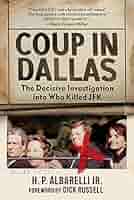
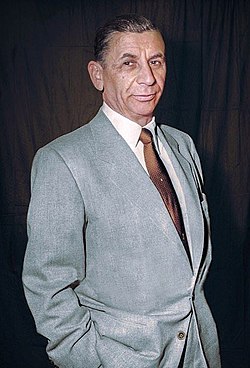
Skorzeny in Egypt
Skorzeny’s activities after he established himself in Spain lead us to who likely hired him to kill the U.S. president. But it’s complicated.
A remarkable book published in 1960, before Kennedy became president, unlocks the door to the mystery. Behind the Egyptian Sphinx: Nasser’s Strange Bedfellows: Prelude to World War III? by Irving Sedar and Harold J. Greenberg describes Skorzeny as having “an active clandestine role in most controversial political events in the Middle East.”

For example, in 1955 he was said to have installed the president of Syria, eventually leading to the creation of the United Arab Republic (UAR) in 1958. He was well known for offering “an unusual assortment of psychological warfare, subversive propaganda, political conspiracy, up to date information on organizing the perfect coup d’état, and a natural genius and cynical Realpolitik.” At the time of the book’s publication in 1960, he was working for Nasser in Egypt providing scores of former Nazi officers to train Egypt’s military and security apparatus.
His principal activity in Egypt was “equipping, organizing, training thousands of zealous commandos” to fight Israel.
Ganis believes evidence indicates that, besides helping Egypt and fighting for the OAS and against Lumumba and de Gaulle and others in the 1960s, Skorzeny was also the CIA’s QJ/WIN, head of a paratrooper team that the CIA wanted to use to assassinate Fidel Castro, Raul Castro, and Che Guevara. The plan, Operation Tropical, developed under the Eisenhower/Dulles administration, was rejected by the new president—JFK—on advice from his brother Robert and Senator J. William Fulbright (D-AR).
It is unclear if JFK knew precisely who QJ/WIN was or his involvement with de Gaulle’s assassination attempt. De Gaulle had phoned JFK after the 1962 attempt and asked Kennedy to have his people stop trying to kill him.
JFK apologized but said he was not sure he could control them. The Skorzeny Papers reveal that Jean Souètre, head of the sniper team for the failed assassination attempt on de Gaulle, went to Portugal at the same time as Skorzeny and asked the CIA agent in charge for more funding for future attempts on de Gaulle.

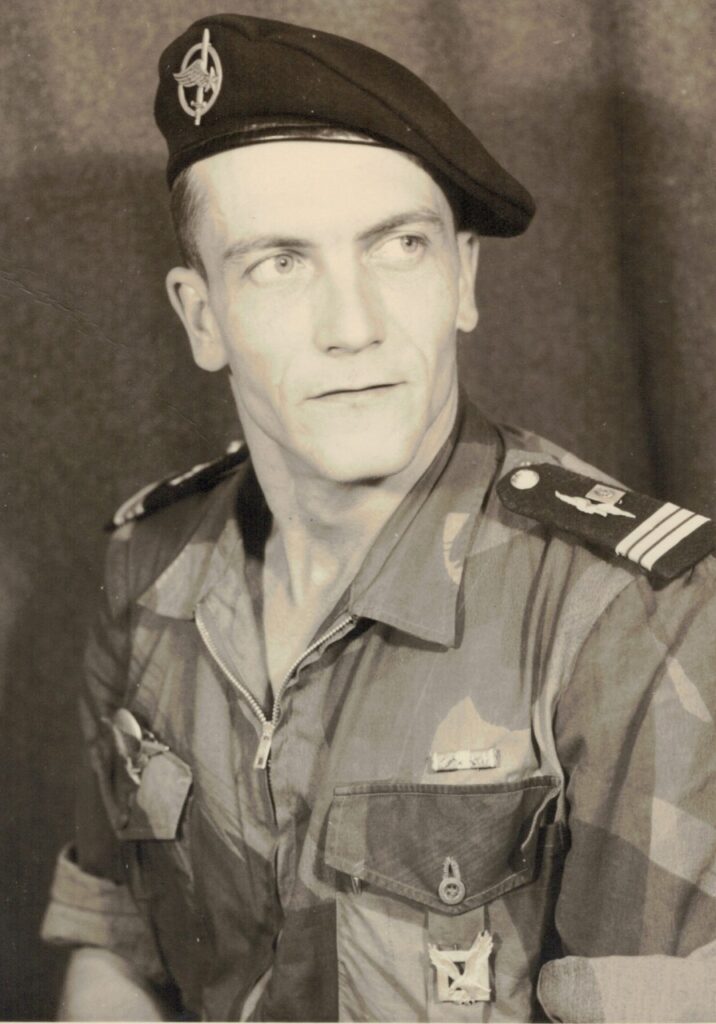
The agent, as an employee of the new John McCone-led CIA, refused. After that, Souètre was employed directly by Skorzeny and his funders and shortly thereafter became head of the JFK assassination sniper team.
In a brief section of The Skorzeny Papers, Ganis reveals that Skorzeny also worked for Ben-Gurion’s Israel in the early 1960s. Angleton became aware of this in 1962, according to Ganis. Unfortunately, Ganis does not explain how Angleton became aware of it, only that Israel already had it in mind before Angleton knew about it and that it related to a problem with German scientists in Egypt.
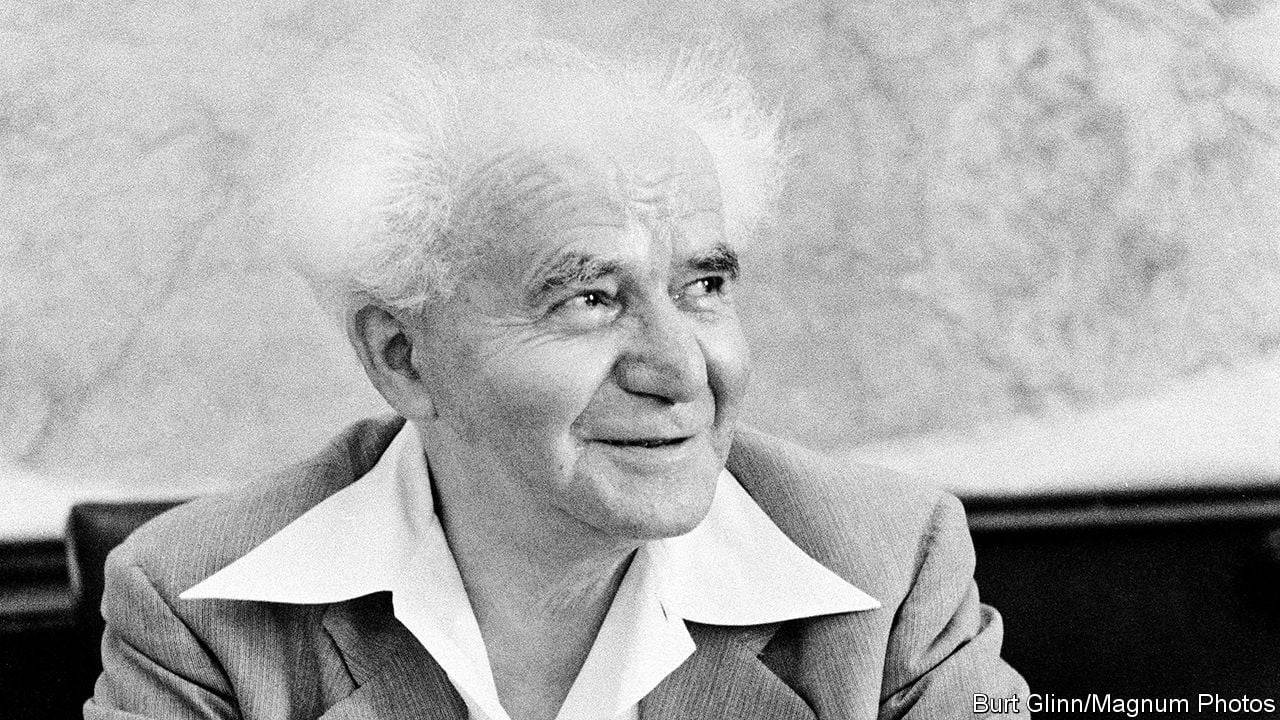
Even more unfortunately, Ganis, a scrupulously honest investigator, does not cite his source for this information, and my queries to him have not yet resulted in a reply.
Few have noticed the importance of this statement. And those who have take at face value the assertion that Skorzeny was used to get rid of German scientists working at Factory 333 in Egypt. Many find the hire odd because Skorzeny was well-known to have been working for Egypt against Israel. He was close with Nasser and the German officers and scientists.
Others might find it hard to believe that the Jewish state would hire a sought-after Nazi war criminal–and that he would agree to work for them. Most Israelis did not like to deal with any Germans and certainly not Wiesenthal-designated war criminals. Given subsequent Israeli disinformation, that German scientists may be a cover story for what Skorzeny actually did for Ben-Gurion in 1963.
In 1960, the Mossad’s enemy-hunting group, known as Amal or Amalek, was headed by Rafi Meidan (sometimes spelled Raphi Medan).
The team, including Rafi Eitan and Peter Malkin, famously captured Nazi Adolf Eichmann in Argentina in that year and brought him to Israel where he faced trial in Jerusalem. Eichmann identified Skorzeny as someone who helped other Nazis escape from capture by Amal. Eichmann was executed in 1962.
Next on the wanted war criminal list was Alois Brunner, who was, however, unobtainable in Syria. Skorzeny was surely next to be hunted and brought to Israeli justice.

As early as 1960, Isser Harel, then head of Mossad, investigated Skorzeny for potential capture or killing. Harel was one who did not like working with Germans. What was so important that, instead of bringing Skorzeny to trial or killing him, the Mossad instead hired him?
If Skorzeny was indeed the cutout who prepared the scenario and provided the shooters for the JFK assassination in Dallas, as Ganis claims the papers indicate, we have to acknowledge what Skorzeny was doing between 1962 and March 1963, when the Kennedy assassination was being planned. He was working for Israel.
We know that the U.S. side of the Kennedy assassination conspiracy has required a relentless cover-up; so did the Israeli side. Israeli intelligence discussed and began refining their public versions of the unlikely Nazi hire in 1972, long before Ganis even acquired the Skorzeny papers.
There is much that needs to be understood about Israel’s extreme sense of existential threat in 1962 and 1963 to appreciate the full context under which Skorzeny was used by Israel. The German missile scientists who were working on rockets in Egypt was certainly one aspect of it, though in November 1963, Israeli agents visiting Washington, D.C., said the danger was overstated, given Egypt’s lack of a missile guidance system.
The Crisis of the German Scientists and Operation Damocles
On Gehlen’s recommendation, Skorzeny had been employed in the 1950s by the Egyptians (paid for by the Americans) to provide former Nazi military and intelligence advisers. The Germans had BND spies among the scientists, and there were even Israeli spies. The entire Egyptian missile situation in regard to Israel is complex but in simple terms: Israel found out about the Egyptian missile project while working on their own secret atomic bomb at Dimona and wanted to make sure Egypt did not get a nuclear capacity first.
In July 1962 Egypt conducted four, reportedly successful, test flights of two missile types—the Al Zafir (Victor) and the larger Al Kahir (Conqueror)—at the Jabal Hamzah launch facility near Cairo. Both of these missiles were single-stage, liquid-fueled rockets possessing rudimentary guidance and control systems. When the Egyptians made a big public display of their rockets on their annual independence day parade, the Israeli public trembled.
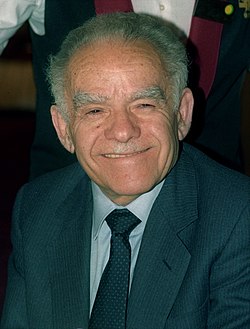
The Mossad under Isser Harel was determined to drive the German rocket scientists out through intimidation, even to the point of assassinating the top half-dozen of them. Operation Damocles was headed by Yitzhak Shamir, the former Stern gang terrorist leader, who sent letter bombs to President Truman in 1947. What with information from Israel’s spies in Egypt and the assassination skills of Shamir (and Amal), not to mention Harel’s aversion to working with Germans, what could Skorzeny possibly have provided in 1962 or 1963 that would have led to exempting him from being hunted as a Nazi war criminal?
The following is a list of the top German scientists targeted in Operation Damocles. Subsequent Israeli (dis)information about the attacks on these scientists begs the question of what Skorzeny was specifically doing for Mossad to help get rid of these scientists (many of whom he certainly knew) in 1962 or 1963. And why Israel was hiding what really happened. Where there is a cover-up, there is something that needs to be concealed.
Hassan Kamil was the Egyptian-Swiss head of the German scientists’ Swiss jet-engine office. In July 1962, right after the Egyptian rocket launch, a private charter airplane explosion killed his German wife as she returned from a vacation in Germany. Kamil had originally planned to accompany his wife.
Heinz Krug was a former German army officer, who had been a business manager and lawyer for the Institute for the Physics of Jet Propulsion in Stuttgart. In 1960 he set up a company, Intra, with offices in Stuttgart, Cairo, and Munich, to procure parts for the Egyptian missile program. In September 1962 he was abducted in Munich. Someone called the police and said he was dead. He was never seen again. There are various versions of what happened to him.
Krug is the crux of the matter as far as when Skorzeny was recruited by Mossad and what he did for Israel. If recruited in 1962, he might have been involved in some way with the Krug murder. If he was not recruited until later, he was hired to do something else.
Wolfgang Pilz became the Cairo missile project director in 1960-61. He had played a key role at Peenemünde Army Research Center during the war. In November 1962 two parcel bombs arrived at his Cairo offices, maiming his secretary/mistress and killing five Egyptian workers.
Otto Joklik was an Austrian engineer working in Factory 333 in Cairo. He was not a target of Operation Damocles but rather a defector from the Egyptian missile program who showed up at the Israeli Embassy in Vienna in October 1962. He became a participant in subsequent Damocles operations, as an Israeli asset, but who he really was and who he represented was disputed. There is evidence from the material to be presented in Part 2 that he may have been sent as an intermediary between Skorzeny and Mossad.
Hans Kleinwachter was a Factory 333 scientist developing missile guidance systems who narrowly escaped death in an ambush near Basel in February 1963. A bullet fired at him deflected off the windshield of his car. Apparently, he was warned by agents of a security service hired after Krug was abducted. Kleinwachter claimed that Joklik was part of the assassination attempt. Joklik told him it was Egyptians, not Israelis, who had tried to kill him.
Jens-Paul Goerke was project manager of the missile program and an electronic guidance expert working at Factory 333. On March 2, 1963, in Basel, Joklik and Joseph Ben-Gal were arrested after threatening Goerke’s adult daughter Heidi.
Ben-Gurion’s Concerns
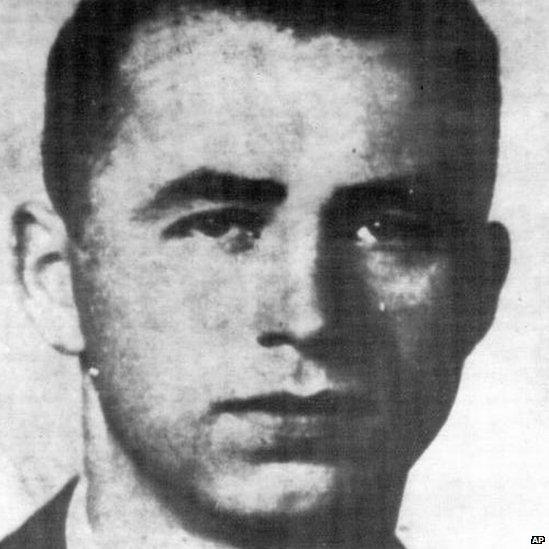
Israel’s extreme sense of existential threat in 1962-1963 involved more than just their neighbor Nasser. He was leading a pan-Arab movement (the UAR) that had recently added Syria, which was harboring war criminal Alois Brunner. In addition, Israel’s own secret nuclear program was in danger, both from lack of funds and from President Kennedy’s relentless opposition to it.
While Operation Damocles was targeting German scientists, Prime Minister Ben-Gurion was in secret negotiations with Germany’s aging Chancellor Konrad Adenauer for funding and other support for Israel’s nuclear program. Adenauer committed Germany to assisting Israel in perpetuity as reparations for his country’s war crimes. Getting caught kidnapping or killing German scientists was not helpful for friendship with Germany.
Unlike many in Israel, including Harel, Golda Meir, and Ben-Gurion’s arch-rival, Menachem Begin, who feared and hated Germans, the prime minister had no problem with them. He hated and feared Arabs (as his pleading letters to President Kennedy demonstrate). Most Israelis believed that the Egyptians, aided by the German scientists, would add nuclear warheads or chemical weapons to their missiles for the purpose of instituting a Nazi destruction of Israel.
In March 1963 there was a showdown between Ben-Gurion and Begin about using former Nazis. Mossad’s Isser Harel did not like it, though he believed in Joklik’s veracity and used him in Damocles. Harel’s archrival, Aman’s Meir Amit, said Joklik was a fake, but he would work with anyone Ben-Gurion wanted. There is no available record, but there must have been an extremely tense discussion at the highest level about using Skorzeny in any capacity.
Ever since January 1962, Ben-Gurion had been involved in an exchange of increasingly chilly letters with the young President Kennedy regarding what he saw as Israel’s nuclear needs. (The letters became available in 2019 and make illuminating reading.) Kennedy’s CIA director said, correctly, that the president “thinks the most serious problem facing us is proliferation of nuclear weapons.”
Most Israelis did not favor Israel developing a nuclear weapon, but Ben-Gurion was intransigent. The program was funded by secret foreign sources, including the powerful fundraiser and 1960 B’nai B’rith Man of the Year Abe Feinberg in the United States, and Baron Edmond de Rothschild in Paris. The head of the U.S. national crime syndicate, Meyer Lansky, said to be richer than U.S. Steel, also contributed heavily to Zionist causes over the years.
In 1962-63, the tension between Kennedy and Ben-Gurion was “invisible to the publics of both countries, and only a few senior officials, on both sides, were aware of the severity of the situation.” The Israeli Air Force commander “seriously entertained the fear that Kennedy might send U.S. airborne troops to Dimona.” Only after the 2019 publication of the Kennedy Ben-Gurion letters did Haaretz acknowledge “the high-stakes battle of wills over Israel’s nuclear program.”
On top of everything, Ben-Gurion had cognitive decline with sudden rages. Not only did he hate Arabs but, frankly, he hated Kennedy too. Israelis knew that the Kennedys were anti-Semites—the famous Kennedy curse was leveled by a rabbi—and now the family was establishing an American dynasty. Attorney General Robert Kennedy had already required the Zionist Organization of America and AIPAC to register as foreign agents.
In March 1963, President Kennedy and CIA Director McCone met several times to discuss the Israeli nuclear program. The CIA director proposed “economic reprisals” if Israel did not accept a prompt and thorough inspection of its reactor complex.
On March 25, 1963, Isser Harel, under extreme pressure from Ben-Gurion, resigned as head of Mossad. In his brief resignation letter to the prime minister he cryptically stated: “Because of our fundamental difference of opinion on the matter of the German scientists in service of the Egyptian war effort and all that it implies, I believe it is my duty to resign.” “All that it implies” jumps off the page. What was implied? His resignation was immediately accepted. Ben-Gurion sent Meir Amit a letter appointing him as the new head of Mossad. Commented Amit, “I accepted without discussion, questions, or explanation.”

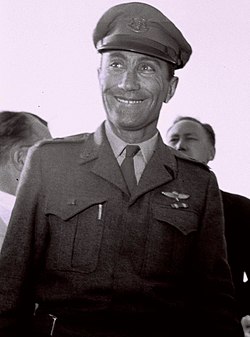
March 1963 is likely the date when the decision was made to assassinate Kennedy. Peter Janney in Mary’s Mosaic quotes the daughter of Secret Service cop/CIA operative/Israeli agent Joe Shimon as indicating that something dire was going to happen in Dallas. (As early as 1958 Shimon was reporting to Rafi Meidan in the U.S. through a Jordanian intermediary.)
Ben-Gurion terminated Operation Damocles. Shamir resigned. Amit was now head of both Aman and Mossad. Harel’s cousin, Rafi Eitan, who had won acclaim with the Amal capture of Eichmann under Rafi Meidan, chose to work with Amit, Meidan and Skorzeny.
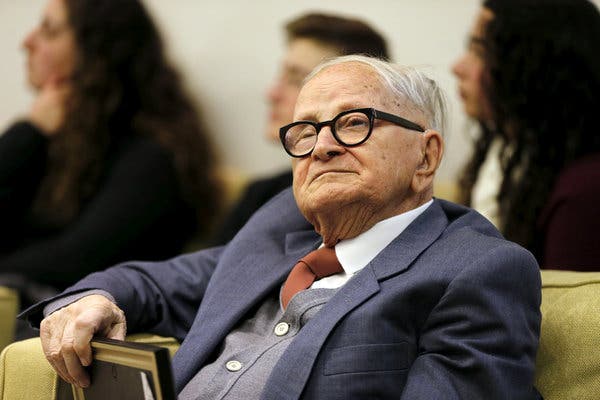
Late 1963 is omitted in most accounts that refer to Israel’s attempt to develop a nuclear weapon at Dimona. The seemingly coincidental death of President Kennedy in 1963 is not even mentioned. The lacunae often tell the tale.
The story of the German scientists resumes when Ben-Gurion turns to Aman to send intimidating letters to some 50 of the next-level scientists to try to “persuade” them to leave. They were gone by the end of the year. In 1964 a new batch decided not to go when the German government, in discussion with Israel, finally provided financial inducements for them to stay.
With Zionist Lyndon Johnson assuming the presidency, Americans no longer posed a problem about Dimona. The U.S. even assisted in Israel’s nuclear program. Ben-Gurion resigned four months after Harel, a resignation relating to his conflict with Begin and Kennedy. He refused to accept Kennedy’s last letter, which basically said “stay in touch”; it was delivered to his successor.
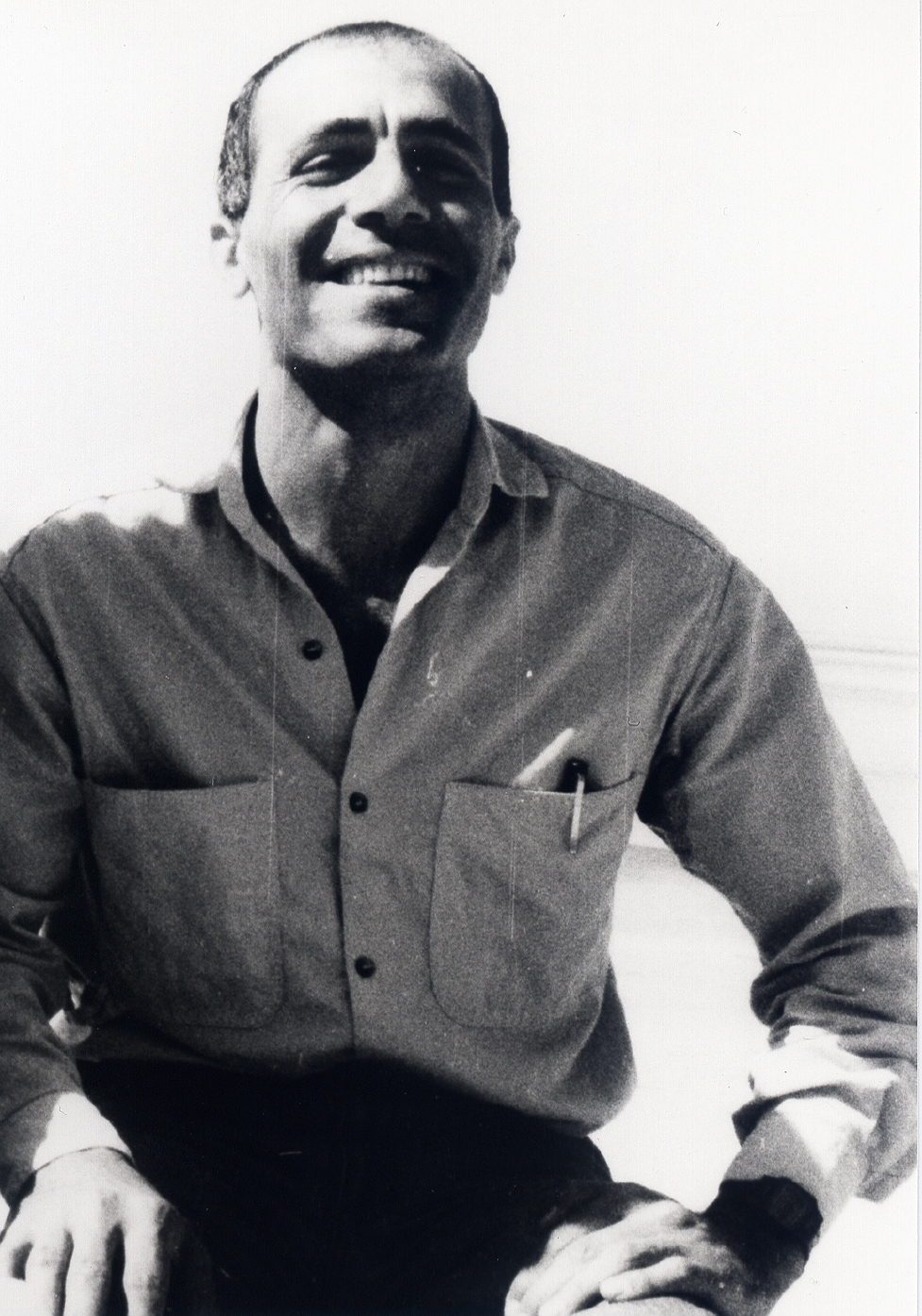
Years later, when Dimona employee and whistleblower Mordechai Vanunu was interviewed, he “alleged that Jerusalem was behind the assassination of U.S. President John F. Kennedy, who was exerting pressure on the then Israeli head of state to shed light on the Dimona nuclear plant.” Vanunu said, “My view is that Kennedy was assassinated because of his strong opposition to [Israeli Prime Minister] Ben-Gurion.”
Lotz in Egypt
An essential element in Operation Damocles was gaining detailed information about the German scientists and their doings in Egypt, which could be best discovered by someone on the ground. Otto Skorzeny could come and go freely in Cairo, but Israel had someone even better: their own German-born but Israeli-naturalized spy, Wolfgang Lotz. Lotz spoke German, Hebrew, Arabic and English.
Before entering Egypt, posing as a wealthy German businessman and horse breeder, he spent years in Germany preparing. Gehlen, in fact, had several files on him under different names and paid for his expensive stud farm. Germany and Israel shared the information he provided. He arrived in Cairo in early 1961 with the principal task of keeping tabs on the progress of the jet propulsion and missile program.
When Damocles went into operation in 1962, Lotz played a major role, perhaps more so than anyone has yet admitted. Eventually, in 1965 Lotz’s transmission device and explosives were discovered by the Egyptians, shortly after they found him and his German wife spying at a remote missile base. (He was primarily caught because Soviet spies intercepted his messages.) German co-defendants in Cairo accused him of sending the letter bomb to Pilz. Lotz and others (including his in-laws) were tried as spies, and Lotz was sentenced to life in prison, while his wife was sentenced to three years of hard labor.
Because Lotz was not circumcised and the Germans paid for his lawyers, the Egyptians chose to accept that he was indeed a German and not an Israeli, and thus he was not executed. The prosecutor at his trial prophesied, “One day there will be trials in Tel Aviv like the Nuremberg trials.”
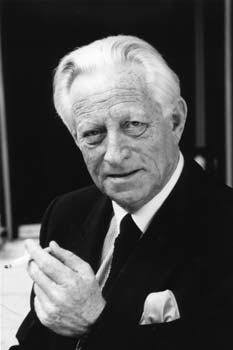

Lotz and his wife Waltraud Neumann were among thse freed in a prisoner exchange in 1968 shortly after the end of the Six-Day War (in which he had helped by identifying real and fake Egyptian aircraft on the ground). The couple settled in Israel.
In 1972 Lotz published (in English) a memoir of his exploits, The Champagne Spy (St. Martin’s Press). It is a fabulous story, and it made him famous. But what is significant here is not what he says he did but what he left out of his story, or what differs from what others say happened. The lacunae often tell the tale.
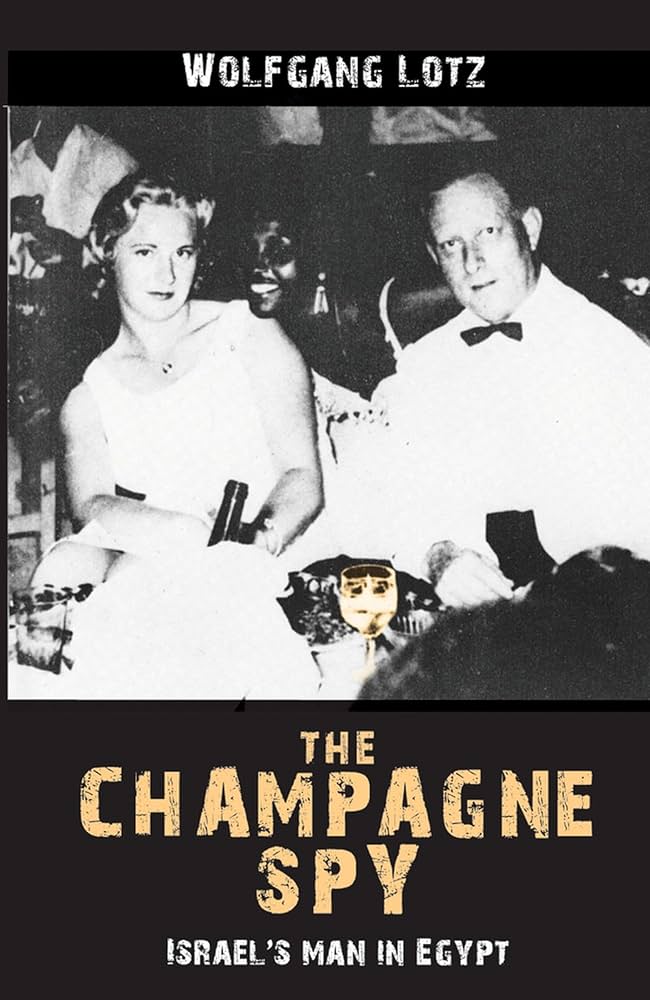
Lotz wrote that, in June 1961, he went to Paris to meet his Aman (IDF) handler. He said that, upon his return on a train to Stuttgart, he met a beautiful German woman, Waltraud Neumann. They instantly fell in love, were married in Munich, and drove through Bavaria to Vienna, the Austrian Lakes, and Venice. He then took a boat to Egypt. In fall 1961 she joined him in Cairo.
He writes that he was twice divorced at the time. There is solid evidence (including a son) that he was in fact still married to his Israeli wife in Paris when he married Waltraud. He also does not mention that he told Waltraud that he spied for NATO and that he was actually an Australian horse breeder, nor did he tell her about his wife or son in Paris. Just an indication of what a spy will tell anyone.
Later he told a young reporter: “There is nothing glamorous about being a spy. Quite the contrary. You have to be totally ruthless. You have to know how to lie, to cheat, deceive and betray those with whom you have built the closest of relationships, even those who you love….You have to be able to suppress your feelings and emotions even knowing that you may be sending someone to their death.”
Lotz writes that, “on their return” from Europe (implied to be 1961 when they married), scientist Pilz and his secretary and five Egyptians received letter bombs. That happened in November 1962, which is a year later, hardly on their 1961 return from their honeymoon in Europe. At his trial, Lotz confessed to sending threatening letters and letter bombs to Pilz in Egypt, but he does not quite admit it in his memoir, nor does he say when precisely he returned from Europe, other than that the letter bombs were sent after his return. They were sent a year after his 1961 return!
Lotz does not say so in his memoir, but other sources confirm he visited his handler Yariv and his family in Paris again in August 1962. In September 1962, German scientist Heinz Krug was abducted in Munich and never seen again. Lotz does not even mention this fact in his memoir, though it must have been of huge interest in Egypt and among the Germans.
The question arises: Did Lotz have something to do with Krug’s abduction? He certainly knew Krug, as he knew all the high-echelon people in Cairo. Did he give information or get instructions from his Aman/Mossad handler—with the start of Damocles he was moved from IDF to Mossad—in Paris regarding Krug in Munich? We now know that, while in Paris in 1962, Lotz, for the first time, let his teenage son know that he was doing dangerous work in Egypt and that he was to keep absolute silence about it. He did not, however, tell his wife or son in Paris about Waltraud.
Lotz does make a point in his memoir of saying that he gave a scientist friend in Egypt named Vogelsang a briefcase to take to a Munich hotel for a major conference that was being held in September 1962. Lotz makes no mention of the fact that Vogelsang was in Munich at the time Krug was abducted! Was mentioning the briefcase meant to imply that Lotz had an alibi of being in Egypt with Vogelsang in September 1962?
Naturally, he writes not one word about the JFK assassination or the change of attitude toward Israel’s nuclear policy under the new president. In fact, there is never a mention of Israel’s own nuclear ambitions. The Egyptians claimed at his trial that Lotz was in Israel in 1962 and 1964. Lotz states that he went to Israel in early 1963 to visit Meir [Amit]. He does not say much about what he was doing in 1963 in his memoir. In most of his book he describes his 1964 arrest, incarceration and trial.
Lotz mentions that, while traveling by boat from Venice in 1964 (before his arrest), he ran into some German scientists from Freiberg bound for Egypt and that he provided this information to Israel.
In The Champagne Spy Lotz discusses infamous Nazis he partied with in Cairo but not a word about Krug or about Otto Skorzeny who, according to Sedar and Greenberg, was extremely well known there. Certainly, Lotz would have known about Skorzeny in the early 1960s. And vice versa.
See Part II here.
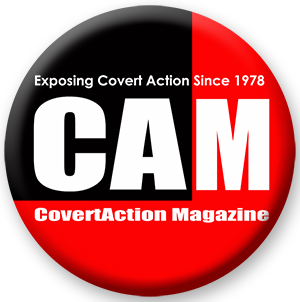
CovertAction Magazine is made possible by subscriptions, orders and donations from readers like you.
Blow the Whistle on U.S. Imperialism
Click the whistle and donate
When you donate to CovertAction Magazine, you are supporting investigative journalism. Your contributions go directly to supporting the development, production, editing, and dissemination of the Magazine.
CovertAction Magazine does not receive corporate or government sponsorship. Yet, we hold a steadfast commitment to providing compensation for writers, editorial and technical support. Your support helps facilitate this compensation as well as increase the caliber of this work.
Please make a donation by clicking on the donate logo above and enter the amount and your credit or debit card information.
CovertAction Institute, Inc. (CAI) is a 501(c)(3) non-profit organization and your gift is tax-deductible for federal income purposes. CAI’s tax-exempt ID number is 87-2461683.
We sincerely thank you for your support.
Disclaimer: The contents of this article are the sole responsibility of the author(s). CovertAction Institute, Inc. (CAI), including its Board of Directors (BD), Editorial Board (EB), Advisory Board (AB), staff, volunteers and its projects (including CovertAction Magazine) are not responsible for any inaccurate or incorrect statement in this article. This article also does not necessarily represent the views the BD, the EB, the AB, staff, volunteers, or any members of its projects.
Differing viewpoints: CAM publishes articles with differing viewpoints in an effort to nurture vibrant debate and thoughtful critical analysis. Feel free to comment on the articles in the comment section and/or send your letters to the Editors, which we will publish in the Letters column.
Copyrighted Material: This web site may contain copyrighted material the use of which has not always been specifically authorized by the copyright owner. As a not-for-profit charitable organization incorporated in the State of New York, we are making such material available in an effort to advance the understanding of humanity’s problems and hopefully to help find solutions for those problems. We believe this constitutes a ‘fair use’ of any such copyrighted material as provided for in section 107 of the US Copyright Law. You can read more about ‘fair use’ and US Copyright Law at the Legal Information Institute of Cornell Law School.
Republishing: CovertAction Magazine (CAM) grants permission to cross-post CAM articles on not-for-profit community internet sites as long as the source is acknowledged together with a hyperlink to the original CovertAction Magazine article. Also, kindly let us know at info@CovertActionMagazine.com. For publication of CAM articles in print or other forms including commercial internet sites, contact: info@CovertActionMagazine.com.
By using this site, you agree to these terms above.
About the Author
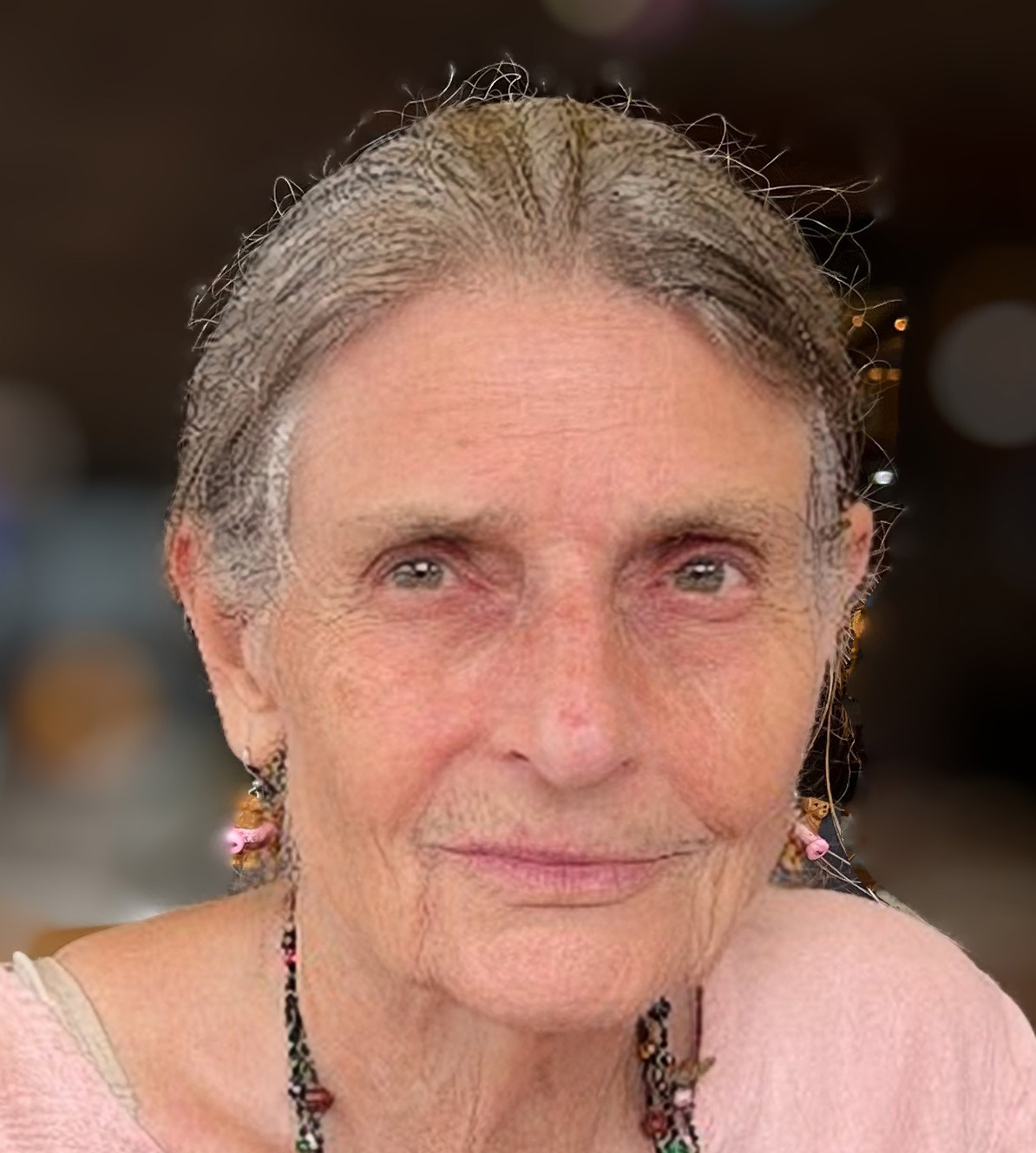
Kathleen Meigs is a thirteenth generation American and walked precincts for John Kennedy for president in 1960.
She matriculated at Stanford University, graduated from UCLA in history and has been a journalist, editor, and published academic author.
Her anthropological novel Mishopshno is available on Amazon. Her love is research, and her passion is truth and good government.
Kathleen can be reached at katymeigs@sbcglobal.net.

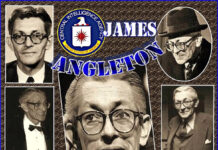
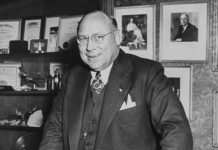
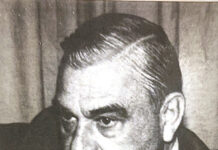
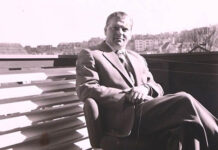
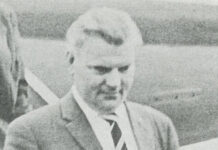
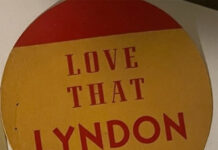


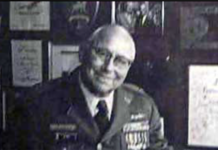
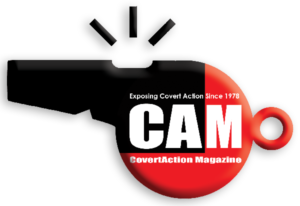
A few years ago there was a good film that was well received
https://www.timesofisrael.com/story-of-mossads-ties-with-high-ranking-nazi-to-become-tv-show/
Hi Jim,
Thanks for your interest in the subject.
Have you read parts 2 and 3 of my series?
They discuss the multiple conflicting Israeli explanations of what Skorzeny was doing for Israel. Ronen Bergman only discusses 1964 not 1962 or 1963. It’s just the latest bit of Israeli obfuscation.
Check out my series parts 2 and 3.
KM
Actually a deceptive film as only deals with 1964 and the Ronen Bergman narrative.
This article provides some info on one the topics of discussion
https://www.jta.org/archive/former-nazi-was-once-duped-into-working-for-mossad
Thanks Michael for taking an interest in my work!
Yes, that article is one of the many that claim to reveal what Skorzeny was doing for Mossad in 1963 or 1962 or 1964. Have you read all three parts of my series? I cover about a dozen divers accounts, which points to a coverup of just what he was doing for Mossad then.
As Candace Owens frequently says: Why are they lying? What are they covering up? No need to lie if you are telling the truth. Mossad cannot be THAT incompetent to never tell the same story twice.
One thing: he certainly wasn’t duped into working for them. It’s more like life insurance and the challenge of a lifetime combined.
Hi Ed,
I’m not quite sure what you mean. Or who is biased.
Egypt did recruit many (not 6,000 though) German scientists and so did Israel.
That is not the point of my reserach. Maybe reading Parts 2 and 3 will clear things up for you.
Just a few things: Skorzeny was not needed to do anything about the German scientists–Operation Damocles took care of it; the threat of JFK stopping Israel’s nuclear weapon program was a much greater threat to Ben-Gurion than the Egyptian rockets, which were not very far advanced.
Hi Ed,
I’m not quite sure what you mean. Or who is biased.
Egypt did recruit many (not 6,000 though) German scientists and so did Israel.
That is not the point of my reserach. Maybe reading Parts 2 and 3 will clear things up for you.
Just a few things: Skorzeny was not needed to do anything about the German scientists–Operation Damocles took care of it; the threat of JFK stopping Israel’s nuclear weapon program was a much greater threat to Ben-Gurion than the Egyptian rockets, which were not very far advanced.
Nobody likes traitors, but if the guy really betrayed so many people, he was a fair target for anyone. Putin betrayed Syria, he’s just lucky that the Iranians are stupid by nature and don’t know how to get revenge on him.
Did I miss something regarding the so-called Skorzeny papers, which were allegedly bought by Major Ralph Gains? You write a great deal about what Gains says are in those papers, including the not-so-small-matter of JFK’s murder. Yet, apparently, you have not seen those papers. Nor have you written that anyone else has. So, how in ? name can we believe they exist or anything that Gains says are in them?
It may or may not be.
Many things can be verified and the only thing that can be determined is that Stalin and Putin were born from Jewish women of the Irina Bolgar type.
Iran Bolgar and Pavel Durov did nothing to prevent the sale of Yazidi women.
http://whale.to/b/stalin_h.html
Hi Ron,
Sadly, you are misinformed about the 2,000 Skorzeny papers. Perhaps you were consulting AI, known for its hallucinations.
Many people have seen the papers. Including JFK reseracher Stu Wexler, who stayed at Ganis’s house and vouches for his integrity.
You might want to watch the film El Hombre Mas Peligroso del Europa, available free on YouTube to see how Ganis obtained them and photos of them.
Good luck, in your reserach. Stay away from AI.
“…a protégé of Hitler’s finance minister Hjalmar Schacht, whose knowledge of where stolen money was hidden helped fund “ratlines” in Rome, which facilitated the escape of thousands of SS officers and other Nazis.”
Was Hitler allowed to escape as some have claimed? It is a serious possibility.
There are a number of books which make this claim such as “Grey Wolf: The Escape of Adolf Hitler” by Simon Dunstan and Gerrard Williams.
As for Israel having a role in the JFK assassination, that is also a serious possibility.
After you read Parts 2 and 3 of my reseach you may be even more certain that Ben-Gurion was the initiator of the JFK assassination by recruiting Skorzeny, whose actual work and dates have been covered up by Mossad ever since it first got out in 1989 that Mossad did in fact recruit him.
Let me know what you think then.
Can you ask Rami and Suhail why in Moscow Suhail have to shoot down drones with a rifle if drones are driving around Rami’s villa? Does he have to keep the villa even so he and Rami can go somewhere to sleep? Living in a luxury villa in Moscow and then shooting drones with a rifle because the drones are driving around the villa? Is this the luxurious life in Moscow or is Rami already used to it, I know Suhail is used to it.
How is this relevant to my series?
The first question is why, before the fall of the country, did Bashar al-Assad order the arrest of Suhail al-Hassan? Was his swearing at Asma al-Assad’s brother really to blame? Or did Kamal al Hassan and Maher al Assad envy him like Gerasimov envied Prigozhin? And the second question? Who owns that villa they kicked Assad out of? Is the owner Rami Makhlouf and if Makhlouf is the owner, does he not have the right to determine who he will live with?
Rami Makhlouf and Suhail Hassan kicked Bashar al-Assad and Kamal Hassan out of the villa last year because they wanted the villa for themselves.
Then the Russian pigs came and took Kamal Hassan and Bashar al-Assad to Marko Milošević, where Kamal Hassan and Bashar al-Assad were disappointed because there was only an big orgy with group s e x and n a k e d people jumping on each other.
I think Putler should recruit all these monkeys, otherwise they’ll lose their temper, because Moscow is full of Jews and Jewish women who want money.
Considering that Bashar al-Assad arrested both of them when he was still the leader of Syria….
And one is his cousin and the other is his best general… And now the two of them have to live together in a luxury villa… maybe because of the Ukrainian drones that ride through the air….Only mosquitoes and flies ride here… And in Moscow, Ukrainian drones…. And if anyone is curious who killed Krug? His disappointed friends… It’s a shame that Putin’s friends aren’t disappointed enough yet…
How is this relevant to my series?
Sadly Mossad, recruited a small number of former Nazis, including a high-ranking SS officer, to disrupt an Egyptian missile program that employed German scientists in the 1960s But Egypt recruited about 6000 former Nazis to help in their goal to defeat Israel. Why are the 6000 recruits by Egypt receiving less attention and then the small albeit concerning number recruited by Israel. Seems like somebody is biased.
Hi Ed,
I’m not quite sure what you mean. Or who is biased.
Egypt did recruit many (not 6,000 though) German scientists and so did Israel.
That is not the point of my reserach. Maybe reading Parts 2 and 3 will clear things up for you.
Just a few things: Skorzeny was not needed to do anything about the German scientists–Operation Damocles took care of it; the threat of JFK stopping Israel’s nuclear weapon program was a much greater threat to Ben-Gurion than the Egyptian rockets, which were not very far advanced.